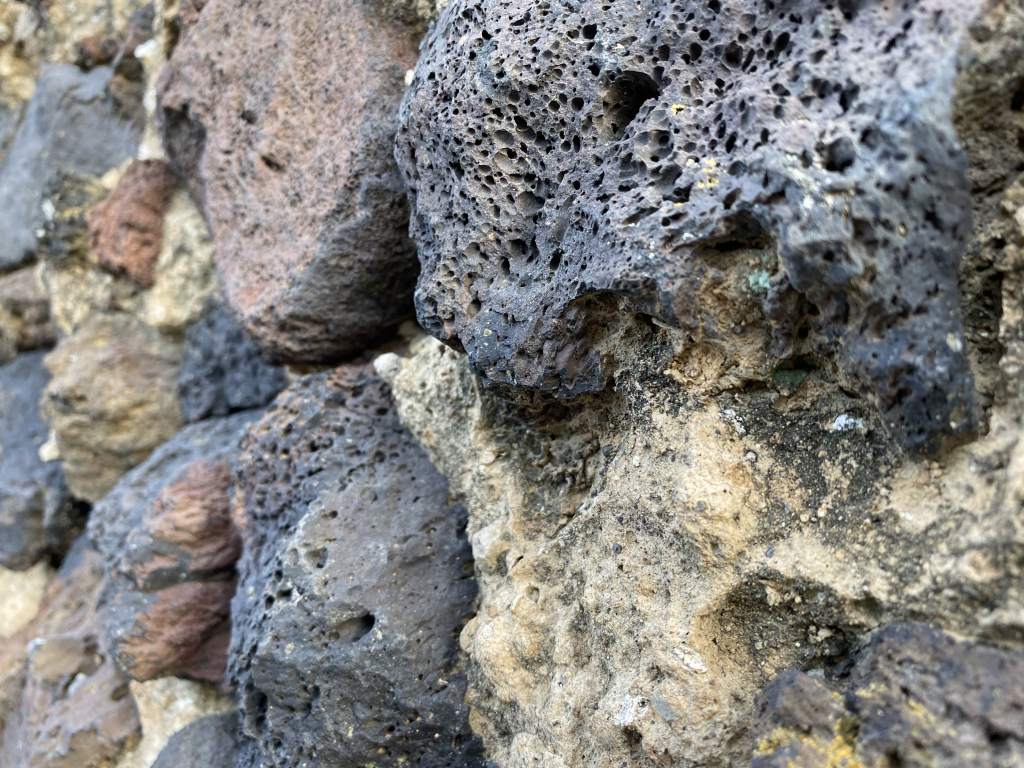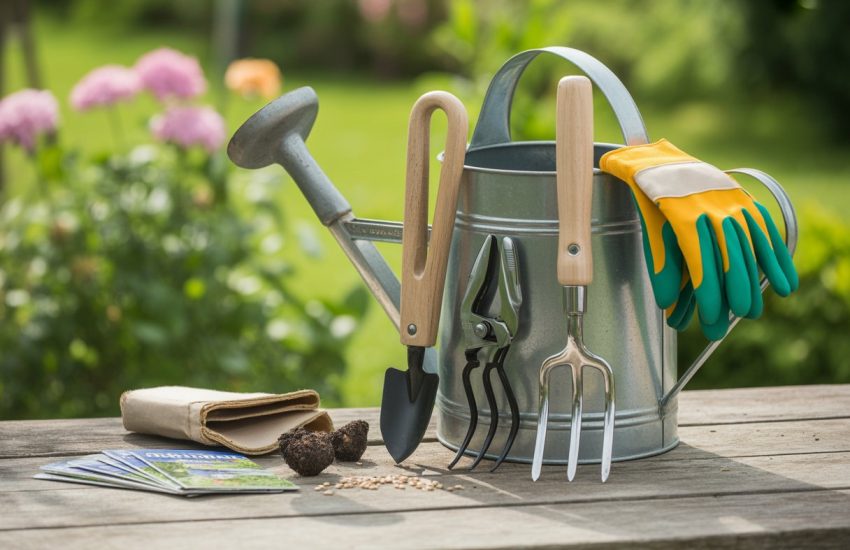Rocks to Choose for a Beautiful Garden Landscape
Creating a stunning garden landscape that draws gawking looks is a harmonious blend of art and science. It requires a thoughtful understanding of various elements that contribute to the unique character of a garden space. Rocks are an often-overlooked aspect of garden design that can do just that by adding texture and a sense of permanence to any garden space. From tiny pebbles to imposing boulders, each rock can serve as a statement piece that aligns with and enhances your garden’s theme and design.
But choosing suitable rocks for gardening is not just about their size or color. It’s about understanding how they fit into the larger picture of your garden’s ecosystem. The right landscaping rocks can enhance your garden’s beauty, create visual interest, and even serve practical purposes like drainage and erosion control.
How you fit in this niche and sometimes practical beautifying piece with your garden aesthetic is what this article is all about. From the rugged charm of natural stones to the polished elegance of decorative rocks, you will get a genuine decorative sense of direction when you are done reading.
Choosing the Right Rocks for a Stunning Garden
Choosing an ideal rock for landscaping goes beyond aesthetics and involves considering how it will contribute to a beautiful and functional garden space. The size, shape, and maneuverability of rocks should align with your garden’s design ideas. The ideal rock should complement your garden’s color scheme and withstand erosion from wind, water, and temperature fluctuations, retaining its color despite exposure to environmental factors.
Rocks come in various colors and textures, allowing you to create diverse and visually appealing landscapes. Large contoured rocks can serve as focal points, while smaller smooth ones can be used for ground cover or pathways. Irregular shapes and varied sizes allow for creative placement, contributing to a more natural landscape.
Lastly, consider how rocks will interact with surrounding plants and soil. Certain rocks can absorb and radiate heat, affecting nearby vegetation, so evaluate your plants’ needs to ensure compatibility. Also, ensure the rocks are compatible with your garden’s soil. Some rocks may alter soil pH, affecting plant health, so conduct a soil analysis to ensure it won’t negatively impact your garden.
Different Types of Landscaping Rocks for Gardening
There are different landscaping rocks, each with unique and beautifying characteristics that contribute to a wonderful-looking garden space. These various features allow gardeners to enhance their space aesthetics with subtle practical improvements. Some of the notable landscaping rocks for gardens include:
Granite Rocks

Granite rocks are formed through the slow cooling of molten magma deep within the earth, resulting in a dense and durable composition. This durability allows granite rocks to withstand the challenges posed by weather, erosion, and general wear and tear, making them an excellent choice for long-lasting garden landscapes. They can be used as accents, borders, or large features, and their color variations, including shades of gray, pink, and beige, allow for creative expression in garden aesthetics.
Granite rocks can be strategically placed in formal gardens with structured layouts to create focal points and define pathways. Their enduring presence also complements more naturalistic landscapes, adding a touch of timeless elegance to the outdoor environment. Choosing granite for landscaping projects aligns with sustainability goals, as it minimizes the need for frequent replacements and reduces the environmental impact associated with less durable rock materials.
Limestone Rocks

Limestone rocks bring a touch of chalky elegance to garden landscapes with their smooth, light-colored appearance. This characteristic makes them an excellent choice for creating refined outdoor spaces. They exhibit a range of colors, from creamy whites and light grays to warm beiges, allows for flexibility in design, which allows for flexibility in design. They reflect sunlight amazingly well, contributing to the garden’s brightness with improved natural radiance.
Limestone rocks seamlessly integrate with water features, adding to the tranquil ambiance of water-centric elements within the garden. Their clean lines and polished appearance add a touch of formality to the landscape. They can create well-defined borders, pathways, or standalone features within a structured garden layout. Unlike materials that may weather quickly or lose appeal over time, limestone maintains its elegance, ensuring that the garden remains visually pleasing year after year.
River Rocks

River rocks, with their smooth, rounded, water-worn surfaces and earthy tones, add a serene and organic aesthetic to outdoor spaces. Their natural appearance seamlessly blends with different plant varieties and garden features. When strategically placed around water elements, river rocks mimic the effect of water-worn landscapes, enhancing the authenticity of the outdoor space. Their drainage properties also help prevent topsoil erosion and promote moisture retention in garden soil. To understand the differences between both types, check out our explanatory piece on topsoil vs garden soil. Knowing the difference will clarify how river rocks can help save both.
River rocks serve practical purposes as ground cover in garden landscapes. Their smooth surfaces create a comfortable and stable walking surface, making them suitable for pathways, walkways, and areas with foot traffic. They can act as a natural weed suppressant when used as ground cover. Their dense arrangement creates a barrier that inhibits weed growth, reducing the need for additional weed control measures. This practical benefit adds to the appeal of river rocks as a landscaping material.
Slate Rocks

Slate rocks stand out among other landscaping materials due to their thin and flat nature. The thin profile of slate rocks and extensive color palette allow gardeners to express their creativity. They are well-suited for rock gardens, adding a rustic charm to these naturalistic landscapes. The thin and flat characteristics of slate allow for the creation of layered arrangements, mimicking the stratified look found in natural rock formations.
Due to their flat and smooth surfaces, slate rocks provide a stable and visually appealing walking surface. Whether arranged in a mosaic pattern or as solid paving, slate pathways add a touch of sophistication to garden landscapes while offering practical functionality. Also, the thin profile of slate rocks makes them suitable for constructing retaining walls. The stacked slate arrangement creates visually striking walls that enhance the garden’s topography while providing structural support.
.
Volcanic Rocks

Volcanic rocks are formed from cooled lava, which brings a distinctive and lightweight element to garden landscapes. Their unique textures, porous surfaces, and irregular shapes add an intriguing visual dimension to outdoor spaces. Their lightweight composition allows for creative arrangements, enabling gardeners to craft visually appealing rock formations within the garden. The dark color variations often found in these rocks create a striking contrast with greenery and the vibrant bloom of garden plants. When strategically placed around plant beds or as mulch, they can serve as a backdrop that enhances the visual impact of surrounding vegetation.
Volcanic rocks are well-suited for container gardens, providing a lightweight alternative to traditional heavy stones. When used as a top dressing or incorporated into the soil mix, volcanic rocks assist in moisture retention. The porous surfaces of volcanic rocks help slow down water evaporation from the soil, making them an ideal choice for regions with arid climates or where water conservation is a priority.
Designing with Landscaping Rocks For Gardens
Designing with landscaping rocks can transform your garden into a beautiful and functional space. When thoughtfully incorporated, rocks can enhance specific features in your garden that creativity touch that strikes a fine balance between esthetics and practicality. Here is how you can incorporate them to archive just that:
Creating Pathways and Walkways

Integrating landscaping rocks into garden pathways and walkways provides a natural and visually appealing aesthetic. Rather than using traditional paving materials, consider arranging flat rocks or stepping stones in a meandering pattern. This not only adds character to your garden but also creates a seamless transition between the built environment and the natural landscape.
Rock Gardens
Rock gardens are an excellent way to showcase the beauty of landscaping rocks. To enact this, you should arrange rocks strategically to create visually dynamic compositions. Vary the sizes and shapes of rocks to mimic the randomness found in natural rock formations. Consider placing taller rocks towards the back and smaller rocks towards the front for depth and perspective.
Accentuating Plant or Container Beds
Amplify the beauty of your container bed garden by strategically placing rocks as focal points. Create miniature rock formations or use larger rocks as statement pieces within the containers. This adds visual interest and uniqueness to your container garden, making it a standout feature in your landscape design. To get a comprehensive understanding of how to implement this, check out our detailed container gardening piece.
Rock Borders

You can use your landscaping rocks to define garden spaces, creating clear boundaries between different areas. Whether delineating flower beds, vegetable patches, or lawn areas, rock borders add structure and help organize the landscape. Select rocks that complement the style of your garden—whether it’s the rugged charm of river rocks for a natural look or the clean lines of slate for a modern aesthetic. The right rock edging enhances the cohesion of your garden design.
Maintenance and Care of Landscaping Rocks
Proper maintenance and care are essential for ensuring the longevity and aesthetic appeal of landscaping rocks. So here are maintenance tips to always observe to ensure your rocks remain pristine:
- Weeds can detract from the beauty of rock gardens and must be tackled with vigor. Select and plant low-maintenance ground cover plants that spread and provide dense coverage, leaving little room for weeds to take root. This prevents weeds and adds a lush, textured layer to the overall rock garden design.
- Landscaping rocks may accumulate stains or debris over time, affecting their appearance. Regular cleaning is essential to maintain the aesthetic appeal of the rocks. Use a soft brush or broom to remove loose debris and dirt.
- Sealing landscaping rocks can enhance their longevity and protect them from the elements. Choose a suitable rock sealer based on the type of rocks in your garden. Sealing not only provides a protective barrier against stains, moisture, and UV rays but also brings out the natural colors and textures of the rocks.
- Perform regular inspections of your landscaping rocks to identify any signs of damage or deterioration. Cracks, chips, or loose rocks should be addressed promptly to prevent further issues. For minor damage, consider patching or filling with a suitable epoxy or filler designed for use with rocks. Larger issues may require professional repair or replacement.
- In damp or shaded areas, algae or moss may develop on the surface of landscaping rocks. To address this, mix equal parts water and vinegar and gently scrub the affected areas using a soft brush. Rinse thoroughly with water. Alternatively, a solution of hydrogen peroxide and water can effectively remove algae.
- Plants near landscaping rocks may require periodic pruning or trimming to prevent overgrowth and maintain a neat appearance. Trim back branches or foliage that may encroach upon the rocks. If you have granite or gravel rocks constantly covered with leaves and shrubs, you can follow the steps in our how-to get leaves out of gravel guide to tackle that.
Final Words on Creating a Beautiful Garden with the Right Rocks
Selecting the right rocks for your garden landscape is a transformative journey beyond mere aesthetics. It involves a thoughtful consideration of the unique characteristics each type of rock brings to your outdoor space. Landscaping rocks, when chosen and placed strategically, add layers of texture, color, and form that enhance the overall beauty of your garden. So, let the rocks you choose speak to your style, resonate with the spirit of your garden, and create a beautiful landscape that reflects your unique connection to the natural world.
References:
https://www.homesandgardens.com/gardens/landscaping-ideas-with-rocks
https://www.gardendesign.com/landscape-design/rock-gardens.html
https://www.bhg.com/gardening/design/styles/rock-garden-designs/
https://www.bobvila.com/slideshow/15-gorgeous-rock-garden-ideas-for-your-landscape-579112
https://www.homesandgardens.com/gardens/landscaping-ideas-with-rocks
https://www.gardendesign.com/landscape-design/rock-gardens.html


